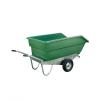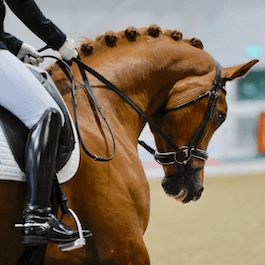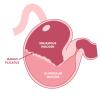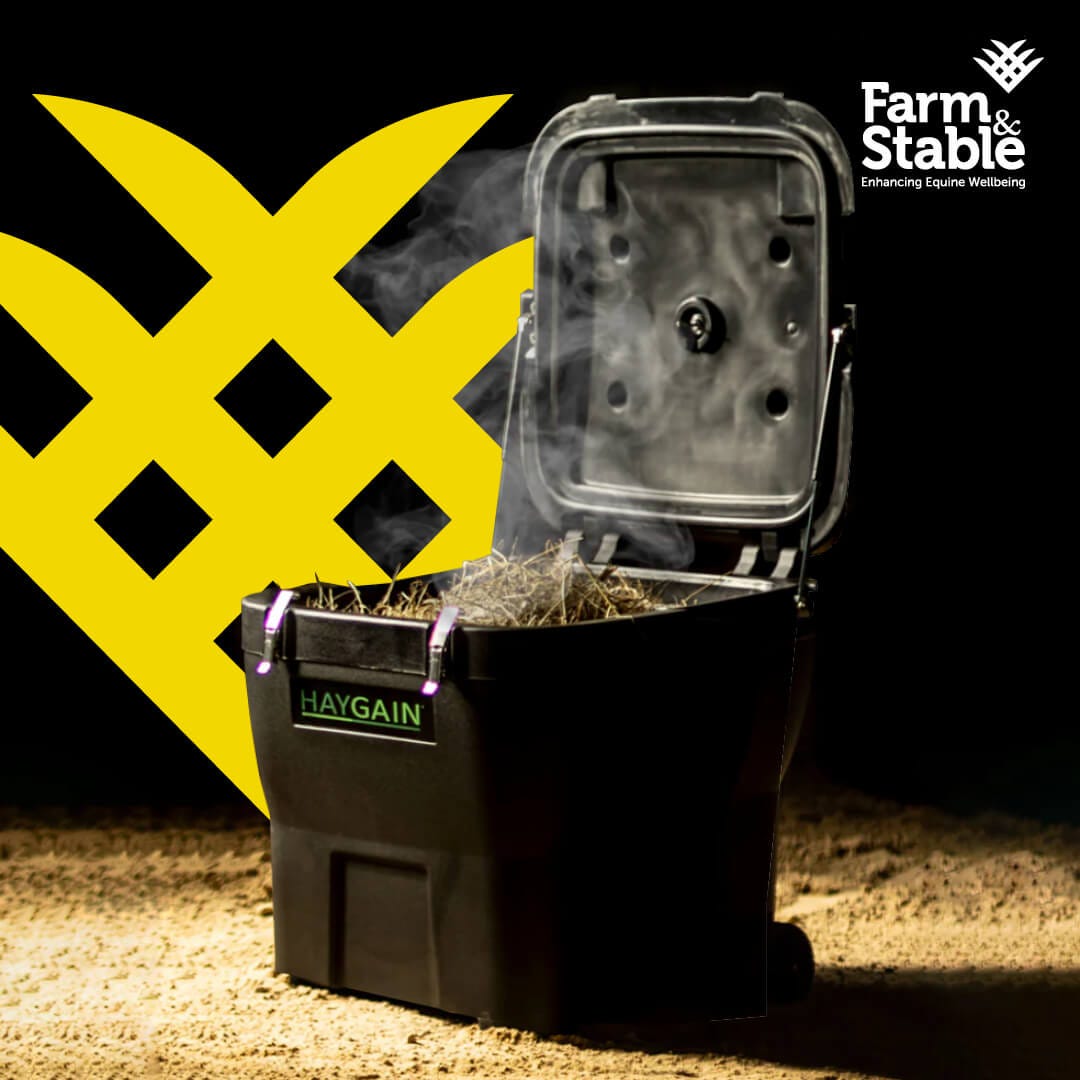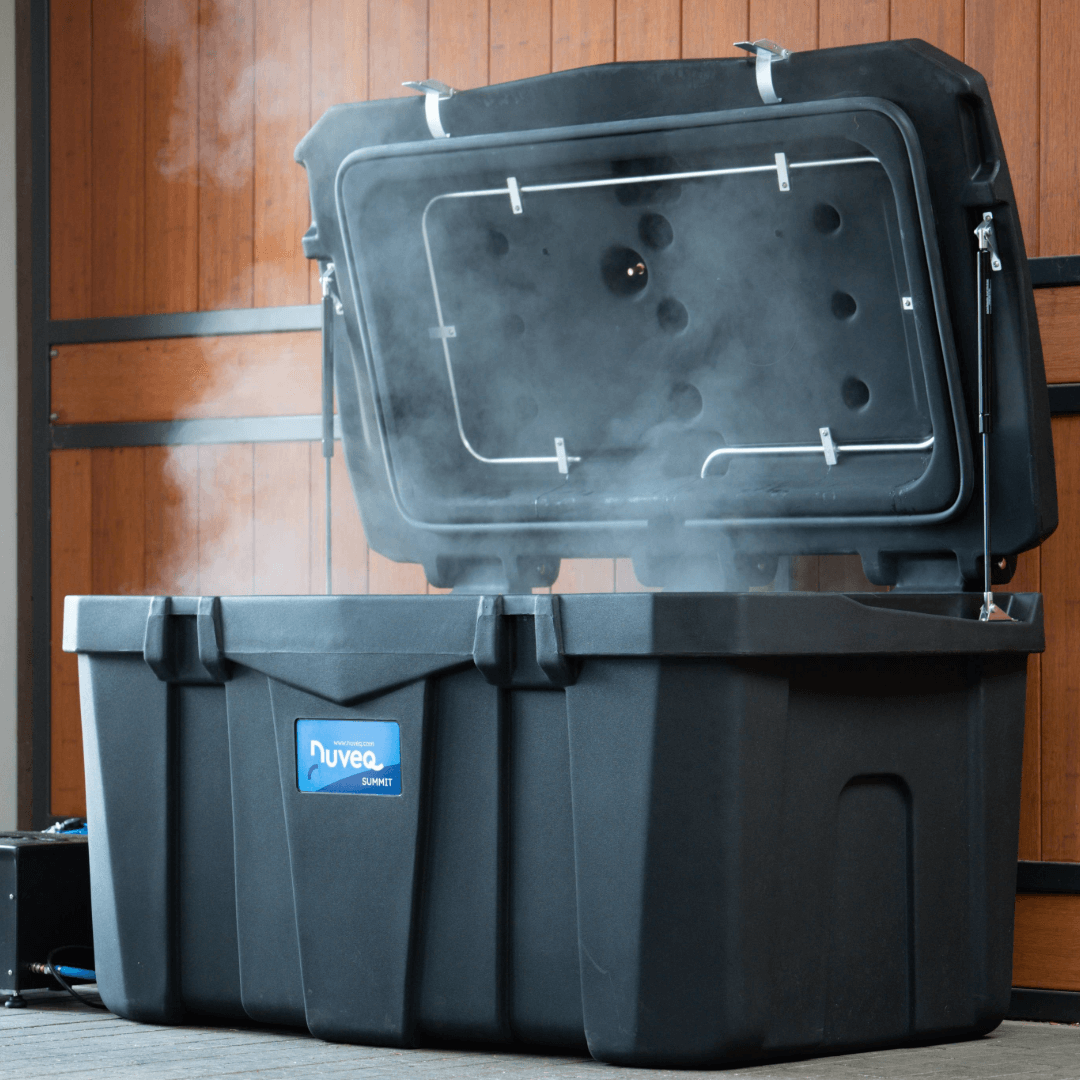
Laminitis is an extremely painful condition in horses entailing inflammation of the laminae- the soft tissue structures that attach the pedal bone of the foot to the hoof wall.
A common cause of laminitis is overfeeding. This is because when carbohydrates are ingested, it causes metabolic changes that result in alerted blood flow to the laminae. Subsequently, the condition is often viewed as more dangerous in the spring due to the development of lush pastures.
However, the soluble carbohydrate content increases in grasses and clovers after rain, so the risk is not isolated just to spring. Recent UK weather patterns have created ideal conditions for grass growth, meaning owners should be cautious about over grazing from spring right through to the autumn.
Laminitis can also be trigged by many other factors including obesity, working on a hard surface, running high fevers, exposure to black walnut shavings, and stress.
Assessing the risk
In addition to the various causes of laminitis, there are certain horses and ponies that will be more susceptible to the condition. Ponies are more susceptible to laminitis than horses, especially when fed rich, lush forage. Geldings are more prone than mares, and laminitis is more common in adult horses than younger horses. In addition, horses with Equine Metabolic Syndrome and Equine Cushing’s Syndrome are more predisposed to laminitis.
The risk of laminitis does appear to increase for all horses when there is excessive or sudden carbohydrate intake. Rapid fermentation of soluble carbohydrates (starch, sugars and fructans) reaching the large intestine results in lactic acid build-up, and a horse’s hindgut has not evolved to handle much lactic acid. This is because lactic acid causes an excessive decrease in pH in the hindgut, which in turn causes certain bacteria to burst and release endotoxins. If the lining of the hindgut is damaged by the lactic acid (or irritated by diarrhoea), it absorbs these endotoxins which can alter the circulation in the foot. This can cause the development of laminitis. Although all four feet can be affected, the forelimbs are more frequently and more severely affected than the hindlimbs.
Signs of laminitis
Initial (acute) symptoms
- Affected horses may adopt a ‘sawhorse’ stance where they rock their weight back off the forelimbs.
- Due to the pain in the forelimbs, they will be reluctant to move. It will be also difficult for you to pick up a front foot due to the pain of the other supporting foot.
- Laminitic horses will frequently lie down.
- The hoof wall and coronary band (the soft tissue around the top of the hoof) are often warm to touch.
Chronic symptoms
These are found in cases where the inflammation has gone on untreated for some time, creating structural changes to the horse’s feet:
- The hoof wall becomes an abnormal dish/slipper shape with long toes.
- There are laminitic “rings” on the surface of affected hooves from previous episodes of laminitis.
- The pedal bone can rotate in the hoof which causes a bulge in the sole
- The horse will adopt clear ‘laminitic stance’ by putting more weight on its back legs due to the pain in the forelimbs.

How to prevent laminitis:
- Act early - Don’t wait until your horse or pony is overweight or had his first episode of laminitis before you consider reducing the risk of laminitis. Rather, if he is susceptible to laminitis, managing it should become part of his daily routine.
Once a horse or pony has had the condition, they will become more prone to it — and any damage may be impossible to rectify.
- Consider the risk - If you have a native pony, cob or a good doer, manage them as if they are already laminitic — this way you will be reducing their overall risk. We don’t fully understand the genetic component of laminitis, but it is highly likely that genetics play a significant role so don’t take any gambles with an at-risk animal.
- Aim to keep your horse slim - Being overweight or obese will increase your horse or pony’s risk of laminitis — although the link may not be a direct one as thin ponies can get it too. A slim animal is healthier for many reasons, so manage diet and keep exercise levels up — this will help support a healthy metabolism.
- Use a suitable feed - Look for feeds approved by The Laminitis Trust, or feed a suitable low-calorie balancer to balance the diet. Avoid cereal-based feeds as these can in time increase the risk of developing insulin resistance.
- Analyse your forage — especially for water soluble carbohydrate (WSC). Aim to choose forage with less than 10% WSC (dry matter).
- Keep an eye on your horse’s feet - Look out for foot tenderness, a stretched white line, blood in the white line, laminitic rings and splaying of the feet — all of these could be signs all is not well with your horse’s foot health.
- Turn horses out to pasture when fructan/WSC levels are likely to be at the lowest. In the UK this tends to be from late at night to early morning. Remove the animal from the pasture by mid-morning.
Ways to restrict grass intake:
- Limit time at pasture - Research has shown that ponies can eat 1% of their bodyweight (dry matter) during a three-hour turnout period!
- Try strip grazing - This means making sure you don’t give them access to too much grass in one go.
- Use of a “pasture free” alternative turnout area – such as sand arenas, woodchip covered areas or use a durracorral to limit space. But be aware there are potential issues such as increased risk of sand colic, especially if forage is restricted.
- Use a grazing muzzle - The appropriate use of grazing muzzles can reduce the dry matter grass intake in ponies within a three-hour period by around 80% regardless of season.
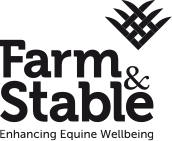

 Forgotten your password?
Forgotten your password?  Free Delivery on all orders over £95+VAT
Free Delivery on all orders over £95+VAT



